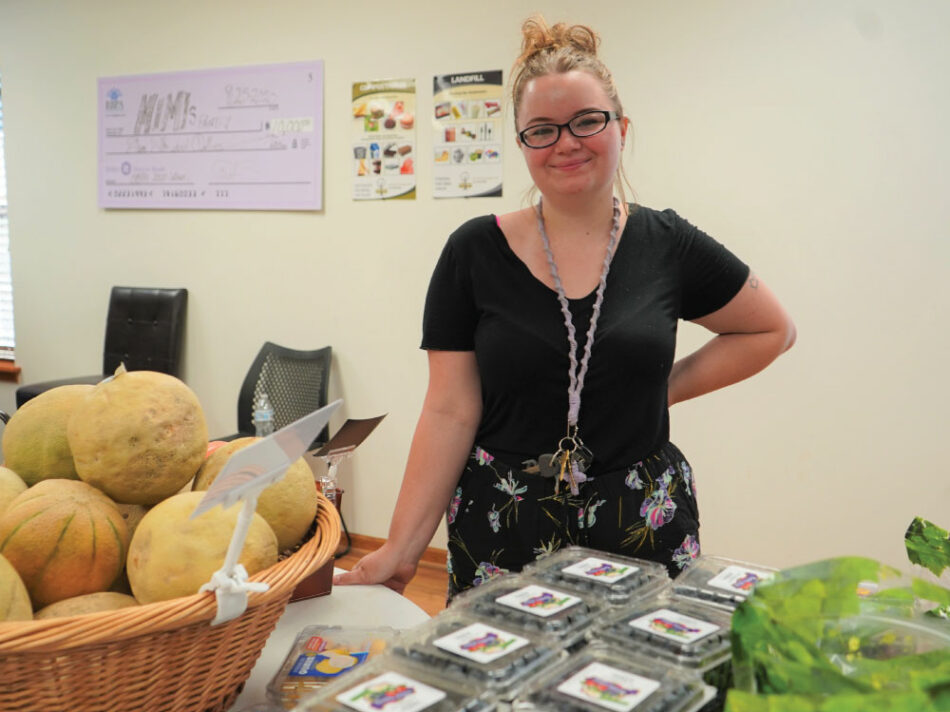
Before her son’s birth 18 months ago, Ariel was a server at a casino buffet.
I made pretty good money, but when the position didn’t reopen because of the pandemic, she decided to be a stay-at-home mom, adding her paycheck would likely have been eaten up by childcare expenses anyway.
Ariel’s fiancé lost his job during the pandemic and now has a higher pay at Amazon, but the family has challenges making ends meet, especially with rising grocery prices in a time of high inflation.
Ariel, 25, says she “grew up poor” and visited “multiple pantries” growing up. She got in touch with Mimi’s Pantry, a Harvesters agency located in Riverside, Mo., for help with food, which has saved her $150-$200 every week.
“We would be way more in poverty,” she says. “Right now, we’re floating above it. This has really helped us.”
She also relies on Happy Bottoms, a nonprofit that distributes diapers to those in need through agencies such as Mimi’s Pantry.
Ariel grabs a green grocery cart and shops for the family. Unlike the catch-all boxes distributed during the pandemic, most pantries, like Mimi’s Pantry, have gone back to a client-choice model designed to provide a supermarket-style shopping experience.
“I think it’s important that they get to pick,” says Marti, a regular volunteer who arranged the
impressive farmer’s market-style section of crates, baskets and buckets, each abundantly stocked with fresh peppers, cucumbers, broccoli, cauliflower, jicama, cantaloupe, peaches, plums berries and tomatoes.
“If you can, today is your day!” another volunteer says excitedly, pointing out a surplus of Roma tomatoes.
Ariel chooses several homegrown tomatoes for her son, who will eat out-of-hand, like an apple. She also is game to try poblano peppers for the first time and adds a ripe melon her cart: “This cantaloupe has my name on it!”
In the pantry, Ariel chooses baked goods, canned goods, staples like pasta and beans. The labels indicate the limits per customer as well as healthy picks. Chocolate chip cookies, no-sugar applesauce, pineapple chunks, a bag of dry lima beans, peanut butter, brown rice, pasta and jarred marinara sauce to into the cart. A nearby table offered Can Do recipe sheets for ingredients such as corn, canned pumpkin, and canned pears.
“I love when you guys have honey!” she says, adding “it’s so expensive in the store.”
Around the corner, Ariel choses freezer items, including meats, and the pantry even has pet food supplies. Ariel chooses a bag for her father’s cat.
In addition to buying food from Harvesters, Mimi’s Pantry volunteers have developed relationships with Wal-Mart and Hy-Vee, as well as After The Harvest, a nonprofit that gleans leftover produce from farm fields.
“It’s just nice when it all comes together,” says Sharon Snowden, director of business development of the multiple efforts required to stock a pantry with this level of choice.
“We’re so thankful, and it’s a blessing from God to find this place,” Ariel says. “They’re so giving and try to reach all families in need. Obviously, if you are coming here, you need the help.”
